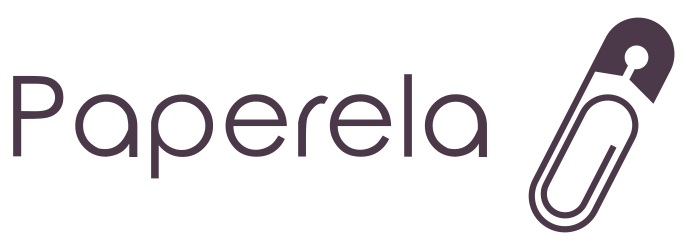
Invest in Your Children – And for Them Too


engagestock/Shutterstock: Planning for your kid’s future
Responsible parents understand the value of saving up for their children’s futures. Astute financial planning means not only making and growing a savings account but also actively investing on behalf of your kids.
This will create a constant flow of passive income that can empower your children to pursue their dreams of higher education and finding a property with minimal debt.
Education

picjumbo/Pixabay: Invest on behalf of your child to help them in their future
Many college graduates carry the burden of an educational loan well into their adult lives. Fortunately, this can be circumvented by setting up either an Education Savings Account (ESA) or a 529 plan. Both plans ensure that your deposits grow tax-free and valid withdrawals will not be taxed.
Couples who earn less than $220,000 and single parents who earn less than $110,000 are eligible to set up an ESA. If your income increases after opening the account, the amount you can contribute to it annually decreases and becomes subject to taxation. If not, you can invest up to $2,000 per child per year into the ESA.
The funds can be invested in stocks, bonds, and mutual funds, and can be moved around with ease. The money can be used for a wide range of school-related expenses, including transport, tuition, and books. The process remains tax-free until your child turns 18, after which a 6% penalty is introduced.
A 529 plan is more flexible in terms of income bracket requirements. It also does not have a cap on the age at which your child accesses the funds. That being said, the 529 plan offers fewer options in terms of investment portfolios. It also restricts you to only reallocating the funds twice a year at most.
While the plan allows you to contribute as much as $14,000 a year, it has an upper limit of $300,000 as the maximum amount you are allowed to contribute in your lifetime.
Other Expenses

Puttachat Kumkrong/Shutterstock: Save room for other expenses
Of course, education will not be the only expense your child encounters in their foray into adulthood. Their wedding, first home, and a car are just some examples of hefty purchases they will have to make.
Thankfully, you can get them started with a Uniform Gifts to Minors Act (UGMA) account. You can deposit gifts in the forms of cash, stocks, bonds, and insurance products into the UGMA account. The gifts are held and managed by you in the account until your child turns 18.
Another option is the Uniform Transfers to Minors Act (UTMA) account, which lets you gift assets like real estate, property, paintings, patents, and royalties. You can manage this account until your kid turns 21.
Both accounts do not have contribution limits. It is also important to note that gifts made into either account are non-refundable – once you make a deposit in the account, you cannot take it back. This means that UGMA and UTMA accounts come with attractive tax perks.
Minors can claim up to $1,100 of income from both accounts tax-free, and the next $1,100 is taxed at the child’s bracket. Only additional withdrawals will be taxed at your income bracket.
The plans discussed above grant full control of the accounts to your children once they turn 21 at most. If you would like to have more control over the funds as your children navigate young adulthood, you can instead consider setting up a money market account in your name. You can deposit money into this account and earn interest for your deposits, and eventually gift the account to your child when you deem them ready.
While you will enjoy fewer kickbacks and perks compared to the above-mentioned plans, you will be able to control the age at which your child is given access to the money.
The greatest gift you can give to your child, though, is not money itself but an appreciation for and understanding of it. This will equip your children with good saving and investing habits with their own income.

Vitalii Vodolazskyi/shutterstock:
If your kid is earning income from allowances, chores, babysitting, or a part-time job, help them set up a custodial Individual Retirement Account (IRA). You can control their account until they are 18-21, after which the account will be transferred to them. Contributions made to the account can be withdrawn tax-free at any time.
The existence of this ‘upgraded piggy-bank,’ which will grow their money through compound interests, can be a valuable introduction to the concept of savings.
More in Financial Planning
-
`
How to Start a Taxi Business With One Car – And Be Profitable
The online taxi booking app industry is a goldmine in today’s market. It offers unmatched convenience for commuters, lucrative opportunities for...
August 16, 2024 -
`
Can You Go to Jail for Driving Without a License? Find Out Now
Driving is an essential part of daily life for many people, but it comes with responsibilities. One of the most fundamental...
August 9, 2024 -
`
Top 5 Richest “American Idol” Winners
“American Idol” has been a launching pad for many aspiring singers since its debut in 2002. The show has produced some...
July 29, 2024 -
`
Can Banks Notarize Documents for Free?
Navigating the landscape of legal documents can often lead you to one crucial service: notarization. Understanding whether you can access these...
July 23, 2024 -
`
5 Tried & Trusted Ways to Get Quality Property Clients
Wondering how to get property management clients? In today’s competitive market, securing high-quality property management clients can be a challenge. But...
July 17, 2024 -
`
If You Get Married in Vegas, Is It Legal Everywhere?
Las Vegas – the city of bright lights, electrifying energy, and…weddings? Absolutely! While renowned for its casinos and extravagant shows, Vegas...
July 12, 2024 -
`
What Is Jax Taylor’s Net Worth?
Jax Taylor, the unforgettable personality from Bravo’s hit show “Vanderpump Rules,” has become a reality TV mainstay. His larger-than-life persona, dramatic...
July 1, 2024 -
`
Here’s What Happens to Stock Options When a Company Is Acquired
When a company gets acquired, the acquiring company often has a set strategy for dealing with stock options. These strategies can...
June 26, 2024 -
`
McDonald’s Menu Price 2024: How It Changed Over the Last Decade
Over the past decade, a visit to McDonald’s has become noticeably more expensive, reflecting a trend that has not only surprised...
June 19, 2024















You must be logged in to post a comment Login